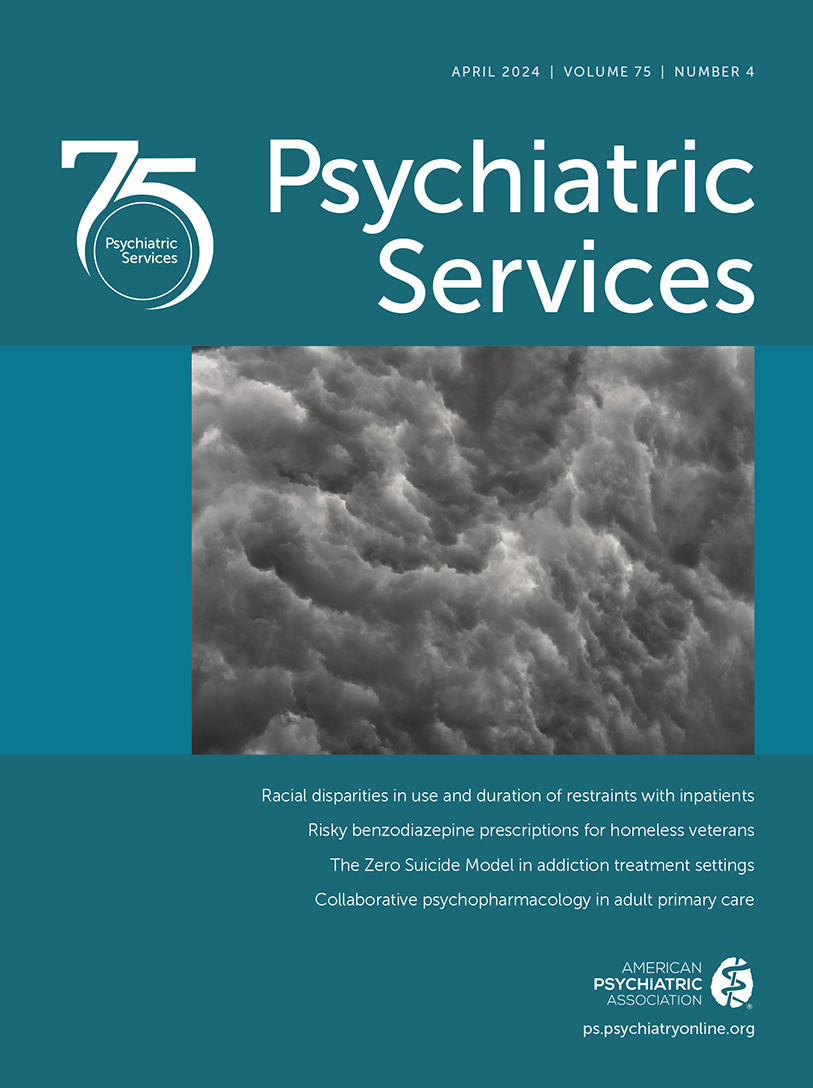Adherence to Recommended Metabolic Monitoring of Children and Adolescents Taking Second-Generation Antipsychotics
Abstract
Objective:
Clinical guidelines recommend periodic monitoring for adverse metabolic effects associated with second-generation antipsychotic medications. The authors sought to evaluate adherence to the guideline-recommended metabolic monitoring schedule for children and adolescents prescribed second-generation antipsychotics.
Methods:
The authors used a national electronic medical records database for a retrospective study of children and adolescents ages 1–17 years (N=9,620) who were prescribed second-generation antipsychotics in January 2010–December 2018. Adherence to guideline-recommended monitoring of body mass index (BMI), blood glucose, and cholesterol was categorized as full, partial, and no monitoring. Full monitoring of patients was defined as strict metabolic monitoring, following the guideline-recommended schedule. Patients who received any monitoring, but not meeting the full monitoring criteria, were considered partially monitored. Three multinomial logistic regression models were fitted for each metabolic parameter to identify predictors associated with monitoring status.
Results:
BMI was the metabolic parameter with the highest adherence to guideline-recommended monitoring (full monitoring, 4.7% of patients; partial monitoring, 44.8%), followed by blood glucose (full monitoring, 6.5%; partial monitoring, 29.4%) and cholesterol (full monitoring, 0.8%; partial monitoring, 22.4%). Being Black (vs. non-Black), having a comorbid mood disorder (vs. none), receiving olanzapine as the index second-generation antipsychotic (vs. aripiprazole), and receiving an antidepressant as a concurrent medication (vs. none) were associated with a higher likelihood of receiving both full and partial monitoring of all three metabolic parameters.
Conclusions:
Both full and partial adherence to guideline-recommended monitoring of children and adolescents prescribed second-generation antipsychotics were poor. However, children and adolescents at increased metabolic risk tended to be more closely monitored.
Access content
To read the fulltext, please use one of the options below to sign in or purchase access.- Personal login
- Institutional Login
- Sign in via OpenAthens
- Register for access
-
Please login/register if you wish to pair your device and check access availability.
Not a subscriber?
PsychiatryOnline subscription options offer access to the DSM-5 library, books, journals, CME, and patient resources. This all-in-one virtual library provides psychiatrists and mental health professionals with key resources for diagnosis, treatment, research, and professional development.
Need more help? PsychiatryOnline Customer Service may be reached by emailing [email protected] or by calling 800-368-5777 (in the U.S.) or 703-907-7322 (outside the U.S.).



